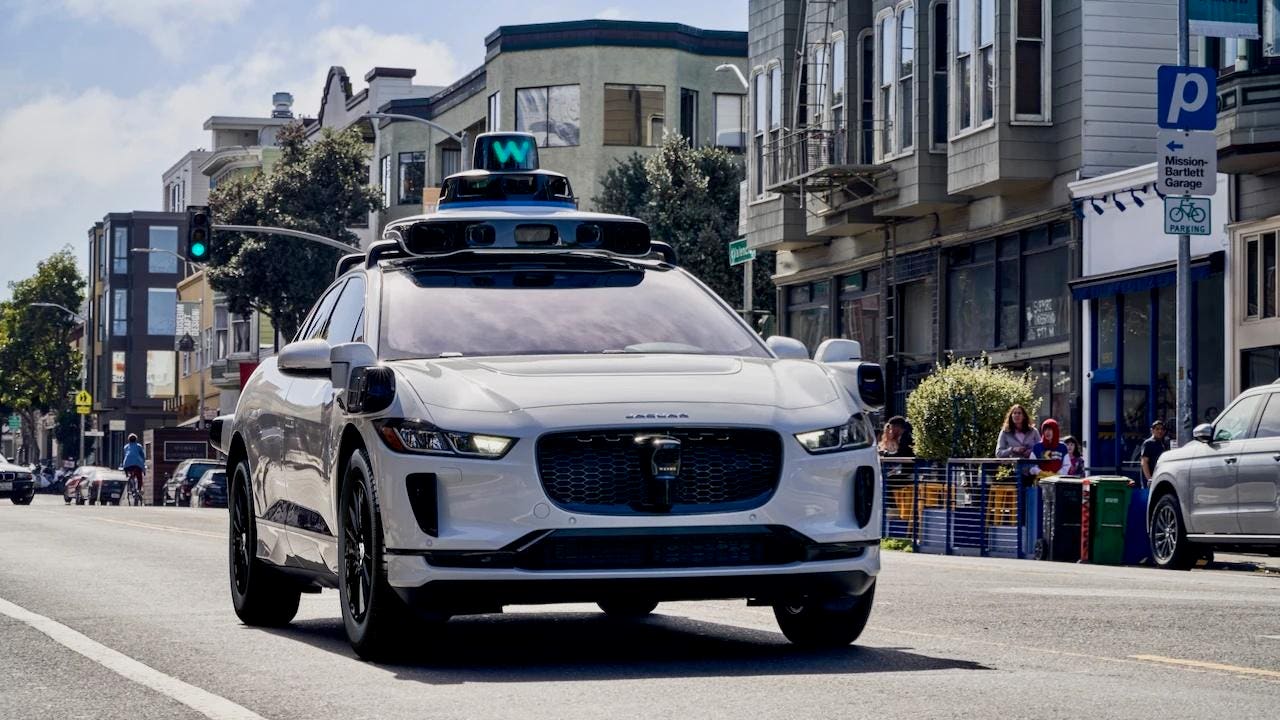Everyone in San Francisco can now use Waymo with no waitlists.
Google Images
There’s still a wait for Waymo. There are no more waiting lists.
As reported by The Verge’s Andrew J. Hawkins earlier this week, the Alphabet-owned robotaxi company announced that it’s now opening up Waymo to everyone in San Francisco. Previously, riders had to download the Waymo One app and get on a waiting list to ride. Now, there’s no waitlist, and anyone who lives or visits San Francisco can ride its autonomous, driverless vehicles.
As Hawkins noted, Waymo began a test service in San Francisco in August 2021, and began offering ride-hailing services to employees in March 2022. The company said that about 300,000 people have signed up for a waiting list. Meanwhile, Phoenix has been enjoying a wait-list-free lifestyle since 2020.
Frequent readers of this column may remember that I’ve covered Waymo extensively in the past, most recently last August ahead of the California Public Utilities Commission’s vote on whether to expand its use in San Francisco. Disability advocates and Waymo co-CEO Tekedra Mawakana made the case for why Waymo should continue to operate (the commission will likely vote in favor), highlighting the impact of self-driving cars on accessibility, especially for members of the disability community. My article also featured an interview with Lana Nieves, executive director of the San Francisco Center for Independent Living. She told me that one of the core appeals of self-driving cars is the increased agency and independence they provide when you want or need to get somewhere.
“I’m not beholden to others. I have a disability, but I’m not a child,” Nieves said. “If I want to go somewhere by myself, why can’t I go by myself? If any adult with a disability wants to go somewhere by themselves, why can’t they? If this technology can make that possible for a broader range of people, not just people without disabilities — if I can walk up to my car and see where I’m going, why shouldn’t it be as widely available and accessible as possible?”
Nieves echoed a recent observation made by Dr. Victor Pineda that people with disabilities have historically been early adopters of new technology, and for good reason. He explained that most able-bodied people are “completely unaware” that people with disabilities are often technologically minded, adding that this ignorance stems primarily from a “paternalistic attitude” towards people with disabilities, with society at large tending to infantilize and belittle them because of a long-standing perception that people with disabilities are unlucky and incompetent.
Meanwhile, Waymo has strong ties to the disability community and considers itself a strong ally for people with disabilities. The company formed what it calls the Waymo Accessibility Network to “improve access, mobility, and safety for the community,” according to its website. In my article last summer, public relations manager Heather Aijian said Waymo vehicles democratize transportation for all, allowing people with disabilities to “more fully participate in society” by having access to the things able-bodied people take for granted every day.
Self-driving cars aren’t perfect, and safety is bound to be a concern, but from an accessibility standpoint, it’s important to note that Waymo is helping, for example, blind or low-vision people get around more independently.
The anti-Waymo faction at City Hall should think twice about that.
“Through our ongoing collaboration, we have witnessed firsthand how Waymo’s self-driving technology is empowering people with disabilities, giving them improved mobility and new independence through self-driving solutions,” she said.
Personally, I’ve been using Waymo for a while here in San Francisco and thought I’d write about the experience in this space someday. In a nutshell, I’m a true Waymo believer. There’s a certain serenity to riding in an empty car. Once you get over the fact that there’s no human in the driver’s seat, you start to realize that the ride is so calm and peaceful. In contrast, when I ride in an Uber, the driver often looks at me in annoyance and disbelief as I struggle to get in and out of the car. Similarly, it seems like 99% of the drivers are on their phones the entire ride. While Uber (and Lyft for that matter) offers similar benefits to Waymo in terms of accessible transportation, the differences are clear when it comes to user experience. This is even literal, as Waymo has a fleet of Jaguar SUVs, whereas Uber and Lyft do not have such fleets unless you pay an extra fee. There are many other benefits to using Waymo, but in summary, I definitely prefer Waymo over Uber and Lyft. Being a bit of a geek, I like the self-driving aspect, but it’s the experience that impresses me the most, and I personally think Waymo is better than them even if they offer greater accessibility with self-driving cars.
The news that Waymo’s wait list is going away comes on the heels of the company announcing that it’s further expanding its service in the Bay Area and expanding into the Peninsula. As someone with family in places like Belmont, Menlo Park, and Redwood City, this development makes me much more likely to go there when my partner (and her car) aren’t nearby. Again, this is no small thing.

